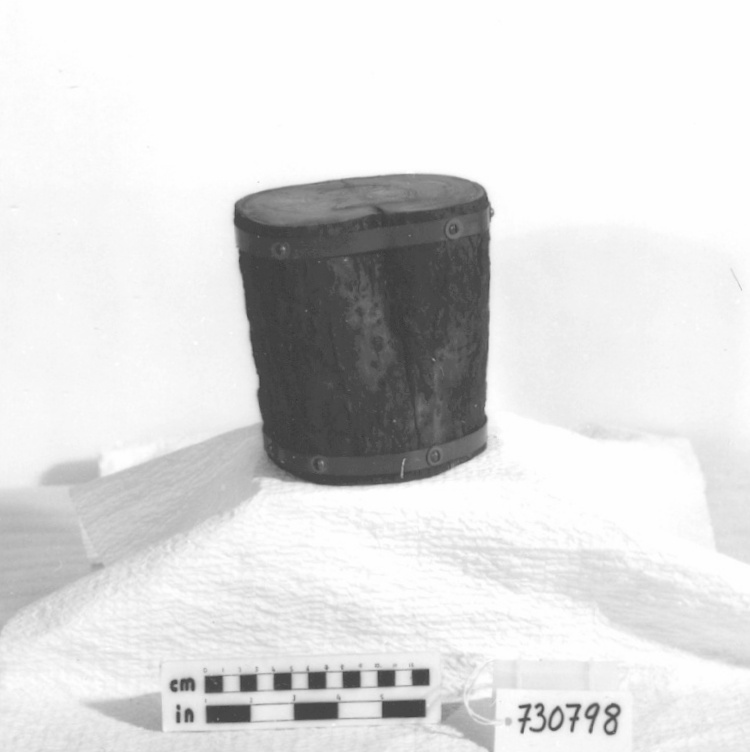Mystery Solved?
If hostility was not the factor behind the placing of the gun barrel, what else could be? The surveying history of Kingsclear also makes the water murkier. Saint Ann's Roman Catholic Church is the only Catholic Church in Kingsclear Parish. According to the Department of Indian Affairs, a survey done in 1916 marked the parametres of a Roman Catholic Church within Kingsclear Parish; as Saint Ann's was built in 1904 it is very possible that these churches are one and the same. If the land was surveyed then, and left to an official record, why was such an unofficial survey marker used, or left in place?
The item pictured here is what an average survey marker between Kingsclear and Saint Anne's Church looks like. It was also found by R.O. Semper and it was the basis of comparison in identifying the gun barrel as an oddity. It was written by Semper that this is a section of apple tree, put in place after the residents of Saint Anne's Church and Kingsclear peacefully marked a boundary. This marker in comparison with the gun barrel halts this project quite quickly. It was found at the same time, by the same man, on the same border. Was the gun barrel even a marker at all? If so, was it superflouous or was the border incredibly long? If there was one marker in place made of wood, why was there not enough time for another?
This brings me to my final conclusion, based on the research found and the questions left unanswered. Instead of inter-community conflict like I originally assumed... someone broke or lost the original marker.
Kingsclear did not have a metal industry of any kind, its only local exports were cedar shingles and art, so the person who lost the marker used the next sturdiest thing: the barrel from their cheap, average Canadian made gun. They most likely did not realize that this marker was just down the boundary.
